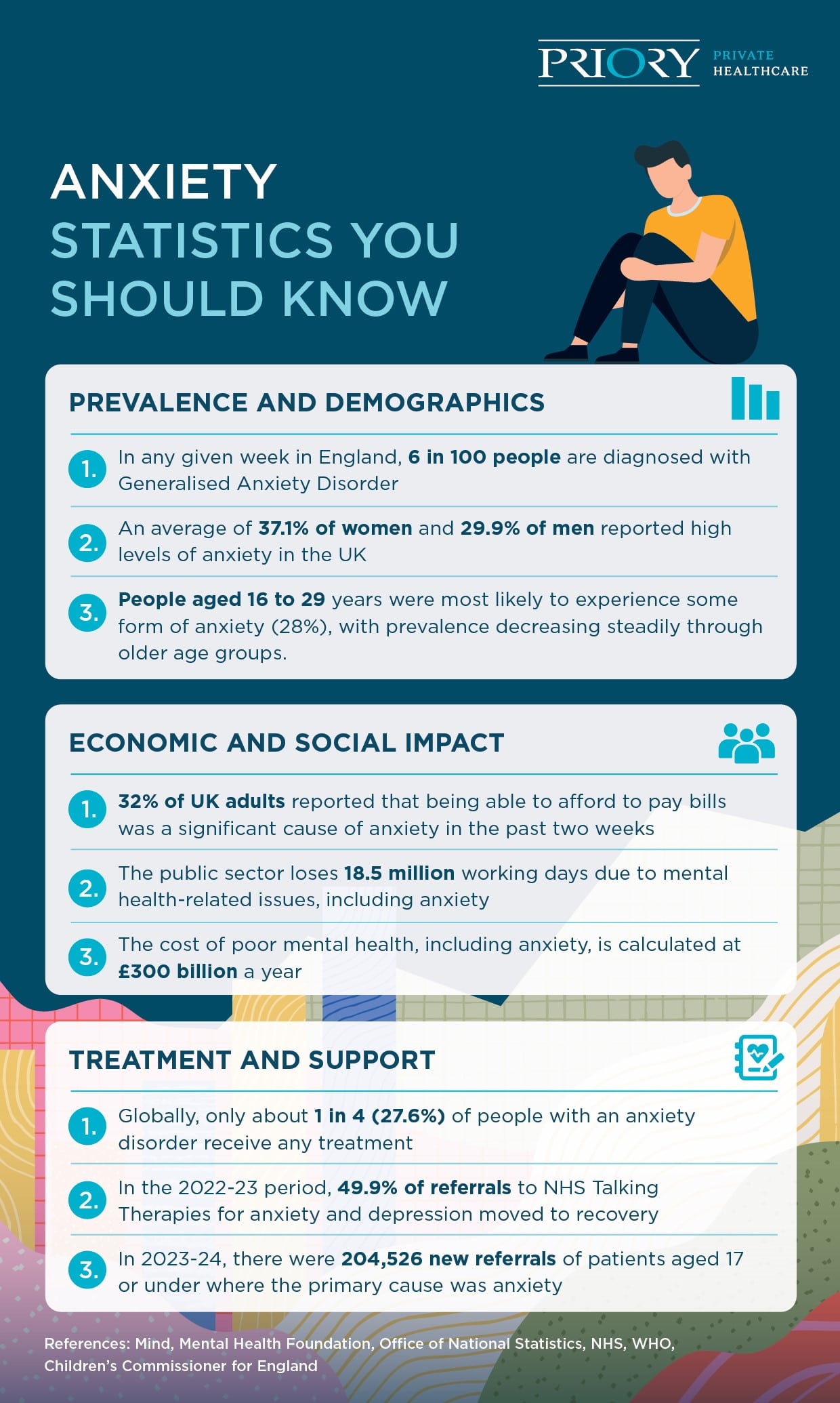Anxiety statistics 2025
37.1% of women and 29.9% of men reported high levels of anxiety, and other recent anxiety facts and statistics.
Anxiety is a feeling of fear, worry or general unease that we all get from time to time, be it when we go for a job interview or go for our first day at school. If these feelings persist, or are so extreme that they considerably affect normal life, you could have an anxiety disorder, just like the 6% highlighted in these UK mental health statistics.
Part of understanding anxiety is educating ourselves on data and research on the topic. To help you gain that understanding of how common anxiety is, we’ve listed some relevant facts and figures from leading organisations in mental health, academia and public health.

[1] Mind: Mental health facts and statistics
[2] Mental Health Foundation: Anxiety Statistics
[3] Mental Health Foundation: Who has anxiety in the UK?
[4] Children's Commissioner for England
[5] Mind: Mentally Healthy Universities Programme:Year One
[7] Office for National Statistics: Cost of living and depression in adults, Great Britain
[8] Mind: The Big Mental Health Report
[10] NHS England Digital: NHS Talking Therapies, for anxiety and depression, Annual reports, 2022-23 -
[12] Our World in Data: Anxiety disorders prevalence, 2021
[13] Office for National Statistics: Coronavirus and anxiety, Great Britain
[14] Health & Safety Executive: Statistics - Work-related ill health and occupational disease